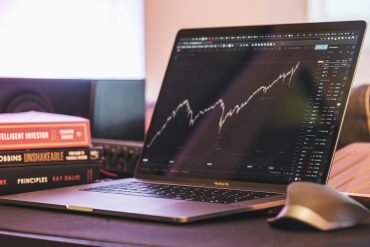CrowdStrike (NASDAQ: CRWD), a leading cybersecurity firm, is positioning itself at the forefront of the industry as artificial intelligence reshapes both threats and defenses. According to CEO George Kurtz, AI is dramatically increasing the number of sophisticated cyber adversaries, requiring companies to deploy more advanced security solutions. This environment has expanded the total addressable market for cybersecurity firms, as organizations increasingly recognize that traditional defenses are no longer sufficient.
At the Goldman Sachs Communacopia conference on Tuesday, Kurtz highlighted the emerging challenge: AI-powered malware is now capable of dynamically probing systems, identifying weaknesses, and even writing scripts to autonomously exfiltrate data. “AI is minting more adversaries,” he said, underscoring that the technology enabling innovation for businesses is simultaneously allowing a new class of threats that companies must defend against.
Strong Financial Performance Amid Growing Demand
CrowdStrike’s second-quarter results show the company’s increasing role in enterprise cybersecurity. Revenue rose 21% year-over-year to $1.17 billion, while annual recurring revenue (ARR) rose 20% to $4.66 billion. The firm’s strong subscription-based model reflects the ongoing demand for real-time, AI-enhanced cybersecurity solutions across global industries, from finance to healthcare.
While the company’s current-quarter guidance of $1.21 billion to $1.22 billion in sales slightly missed some analyst expectations, the underlying growth trajectory remains solid. Investors are focused on the long-term adoption of AI-driven security platforms rather than short-term fluctuations, suggesting that CrowdStrike’s market leadership could benefit from continued enterprise digitalization and escalating cyber threats.
AI: Expanding the Cybersecurity Battlefield
The rise of AI in both corporate and consumer environments has created a dual-edged effect for cybersecurity. On one side, AI helps companies like CrowdStrike to rapidly detect and neutralize threats through predictive analytics and automation. On the other side, AI is empowering hackers to create more sophisticated malware capable of adapting to traditional security measures.
Industry analysts note that this challenge is fueling a surge in enterprise spending on cybersecurity solutions. According to Reuters, global cybersecurity budgets are expected to grow at a 10–12% annual pace over the next five years, largely driven by the adoption of AI technologies. Companies are now prioritizing threat intelligence, endpoint security, and AI-driven monitoring platforms, which collectively expand the revenue opportunities for firms like CrowdStrike.
Navigating Growth and Risks
For investors, CrowdStrike is a company at the intersection of technology growth and increasing demand for security. While margins remain under pressure from rising R&D investments in AI and threat detection, the company’s recurring revenue model provides some degree of predictability.
At the same time, growing competition from both leaders and new AI-focused cybersecurity startups presents a risk. Analysts caution that the company’s ability to innovate faster than attackers and differentiate itself in a crowded market will be key to sustaining long-term growth.
Looking Ahead
CrowdStrike is betting on AI not just as a defensive tool but as a competitive differentiator. Its investments in next-generation threat detection, behavioral analytics, and automated response systems position it to capture a growing share of the multi-billion-dollar cybersecurity market. As AI continues to evolve and cyber adversaries become increasingly sophisticated, investors will keep an eye on CrowdStrike’s execution on innovation and global expansion.
With the cybersecurity landscape rapidly changing, the company’s performance will likely serve as a bellwether for the broader AI-driven security industry, highlighting both the opportunities and the risks inherent in a world where digital threats are becoming as smart as the defenses designed to stop them.


